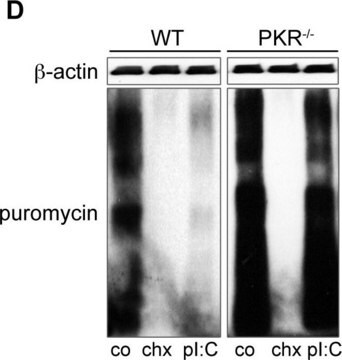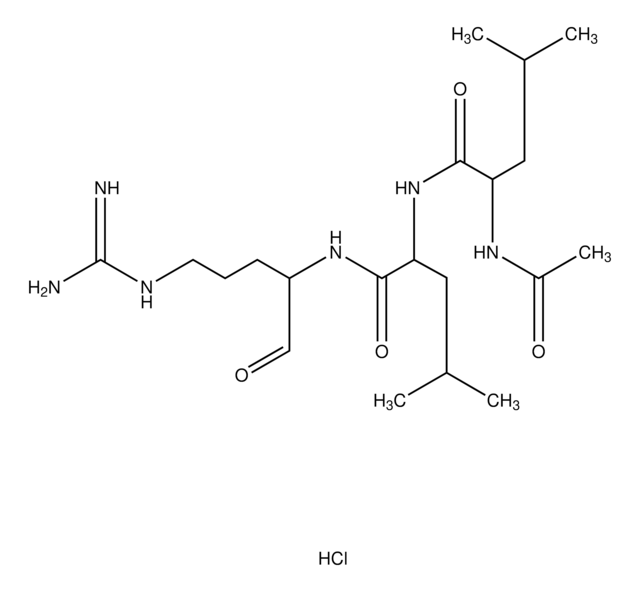P7255
Puromicina dihydrochloride from Streptomyces alboniger
≥98% (HPLC), powder
Sinónimos:
3′-[α-amino-p-metoxihidrocinnamamido]-3′-desoxi-N,N-dimetiladenosina dihydrochloride
About This Item
Productos recomendados
Quality Level
assay
≥98% (HPLC)
form
powder
greener alternative product score
old score: 88
new score: 79
Find out more about DOZN™ Scoring
greener alternative product characteristics
Atom Economy
Design for Energy Efficiency
Use of Renewable Feedstocks
Design for Degradation
Learn more about the Principles of Green Chemistry.
sustainability
Greener Alternative Product
solubility
H2O: 50 mg/mL
antibiotic activity spectrum
Gram-positive bacteria
neoplastics
parasites
greener alternative category
mode of action
protein synthesis | interferes
storage temp.
−20°C
SMILES string
Cl.Cl.COc1ccc(C[C@H](N)C(=O)N[C@H]2[C@@H](O)[C@@H](O[C@@H]2CO)n3cnc4c(ncnc34)N(C)C)cc1
InChI
1S/C22H29N7O5.2ClH/c1-28(2)19-17-20(25-10-24-19)29(11-26-17)22-18(31)16(15(9-30)34-22)27-21(32)14(23)8-12-4-6-13(33-3)7-5-12;;/h4-7,10-11,14-16,18,22,30-31H,8-9,23H2,1-3H3,(H,27,32);2*1H/t14-,15+,16+,18+,22+;;/m0../s1
InChI key
MKSVFGKWZLUTTO-FZFAUISWSA-N
¿Está buscando productos similares? Visita Guía de comparación de productos
General description
Application
Biochem/physiol Actions
Modo de resistencia: La puromicina acetiltransferasa es un gen de resistencia eficaz.
Espectro antimicrobiano: Este producto es activo frente a microorganismos grampositivos, menos activo frente a los bacilos acidorresistentes y más débilmente activo frente a los microorganismos gramnegativos. La puromicina puede impedir el crecimiento de bacterias, protozoos, algas y células de mamíferos y actúa rápidamente, matando al 99 % de las células en 2 días.
Features and Benefits
Caution
Preparation Note
Other Notes
signalword
Warning
hcodes
pcodes
Hazard Classifications
Acute Tox. 4 Oral
Storage Class
11 - Combustible Solids
wgk_germany
WGK 3
flash_point_f
Not applicable
flash_point_c
Not applicable
ppe
dust mask type N95 (US), Eyeshields, Gloves
Certificados de análisis (COA)
Busque Certificados de análisis (COA) introduciendo el número de lote del producto. Los números de lote se encuentran en la etiqueta del producto después de las palabras «Lot» o «Batch»
¿Ya tiene este producto?
Encuentre la documentación para los productos que ha comprado recientemente en la Biblioteca de documentos.
Los clientes también vieron
Contenido relacionado
We offer a variety of small molecule research tools, such as transcription factor modulators, inhibitors of chromatin modifying enzymes, and agonists/antagonists for target identification and validation in gene regulation research; a selection of these research tools is shown below.
Nuestro equipo de científicos tiene experiencia en todas las áreas de investigación: Ciencias de la vida, Ciencia de los materiales, Síntesis química, Cromatografía, Analítica y muchas otras.
Póngase en contacto con el Servicio técnico










